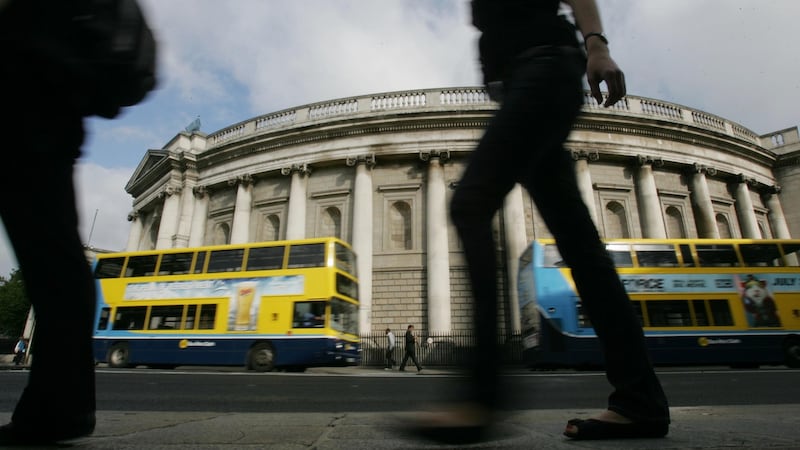The proverbial chickens have come home to roost in Dublin's College Green. Plans to transform it into a "landmark civic plaza", at an estimated cost of €10 million, seemed like such a good idea until the scheme ran into sustained opposition from sectional interests – taxi drivers, department stores, hotels, multi-storey car park operators and even Dublin Bus. The fact that there are an unprecedented 70 "notice parties" involved in An Bord Pleanála's current public inquiry, each with its own agenda – both for and against – speaks for itself. Indeed, it is a measure of how fractious Dubliners can become when faced with decisions about the allocation of road space in the city centre.
The council's case for the plaza has not been helped by the chaos that attended the introduction of Luas Cross City trams on the eastern side of College Green
Incredibly, senior officials of Dublin City Council originally planned to proceed with the pedestrian plaza under the Roads and Traffic Acts, under which there would have been no need for any statutory public consultation. But the knock-on consequences of the scheme, including the diversion of bus routes and other traffic from College Green, made an environmental impact assessment inevitable. Parliament Street, for example, was to be turned into a two-way bus corridor carrying up to 1,600 buses per day. This is no longer being proposed, for the simple reason that the pollution emitted by diesel-powered buses would likely exceed EU air quality standards.

The council's case for the plaza has not been helped by the chaos that attended the introduction of Luas Cross City trams on the eastern side of College Green, competing with buses, taxis and cyclists. Neither has it been served by the proliferation of steel poles, catenaries and utility boxes that have severely compromised the visual amenity of Dublin's premier civic space. If this ambitious scheme is to proceed, the council will have to convince An Bord Pleanála that it is capable of being implemented, without such downsides as a doubling of bus journey times in the city centre.
The worthy prize of reclaiming College Green as a great civic space demands more than simply repeating assurances that everything will work out just fine when the plan is implemented.






